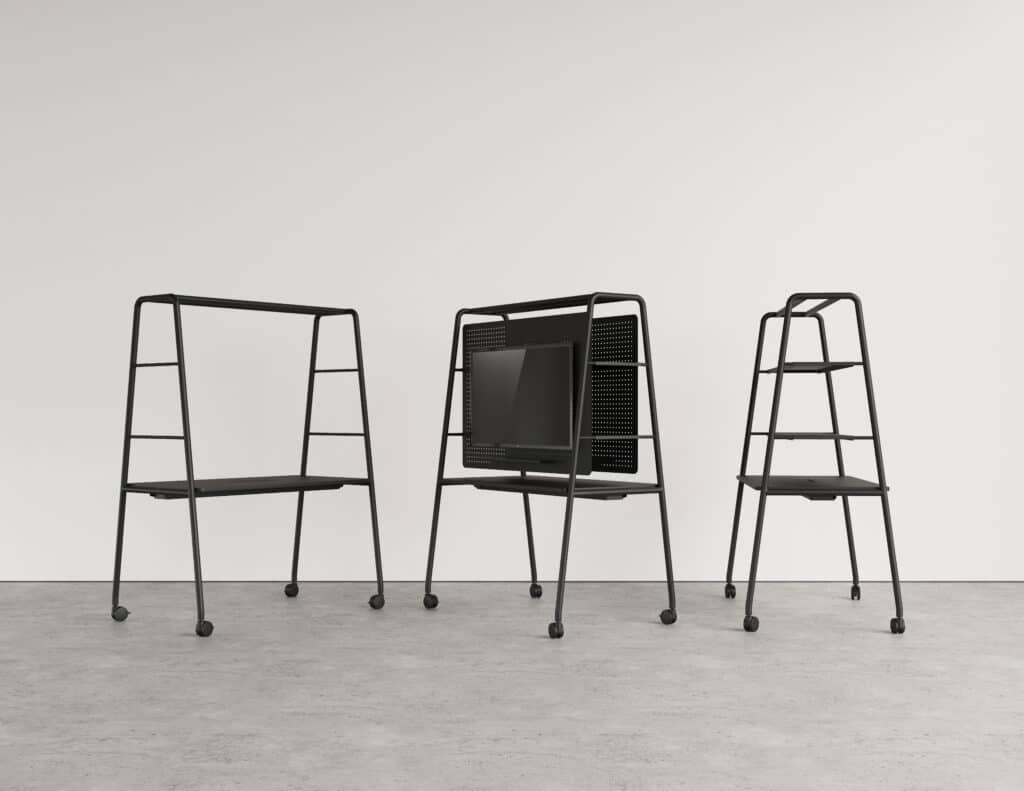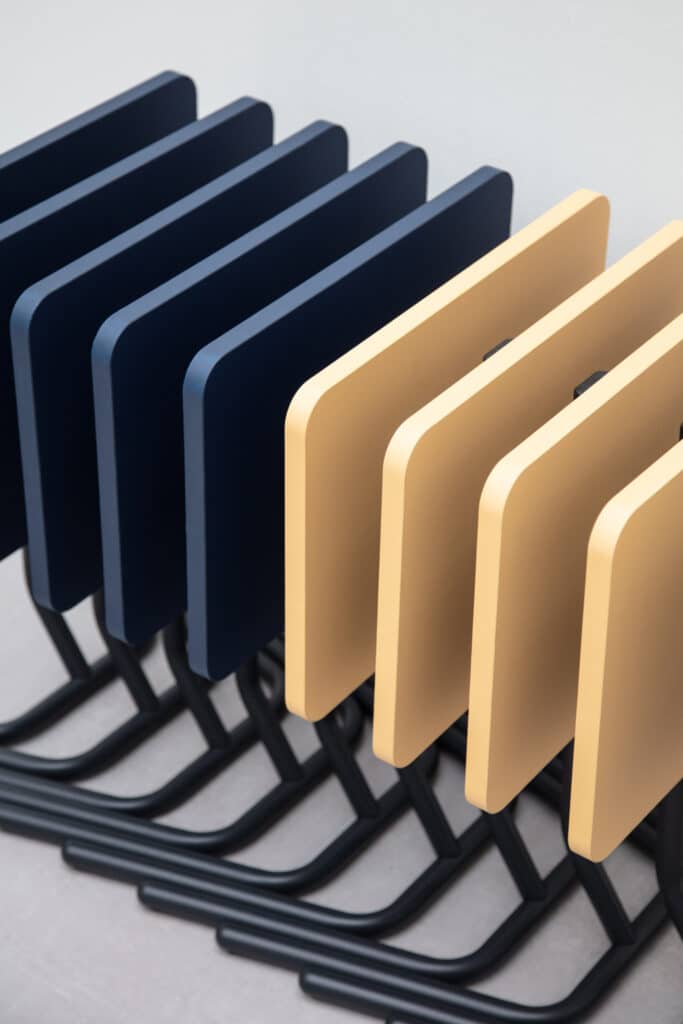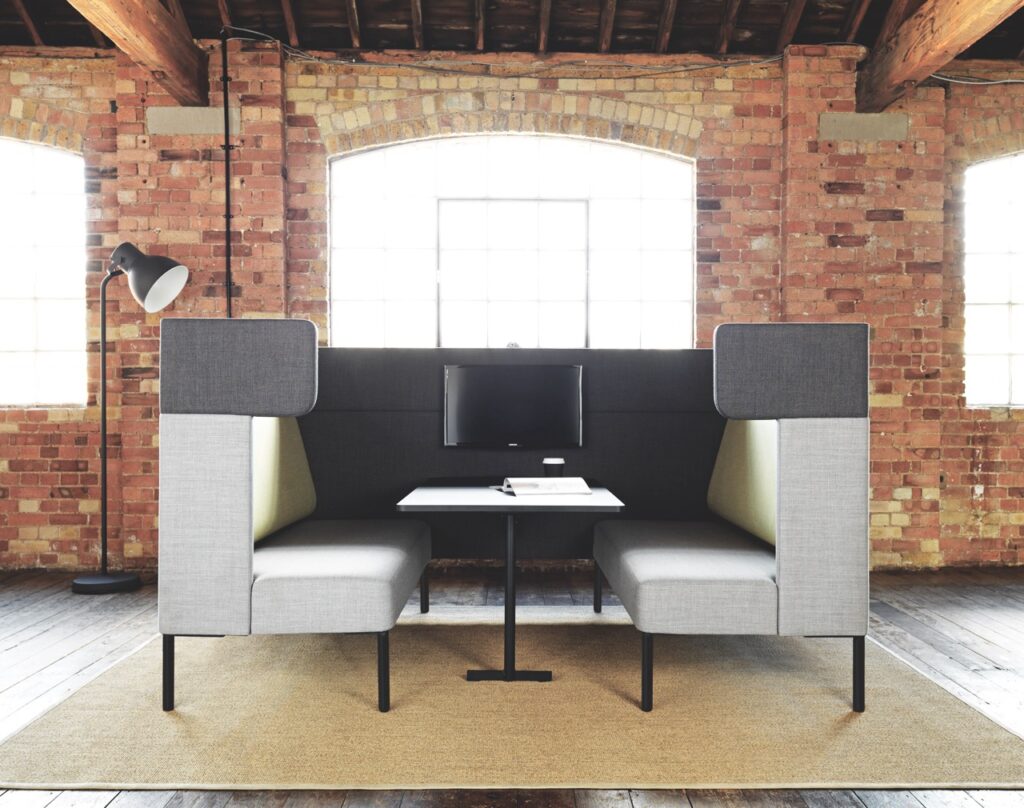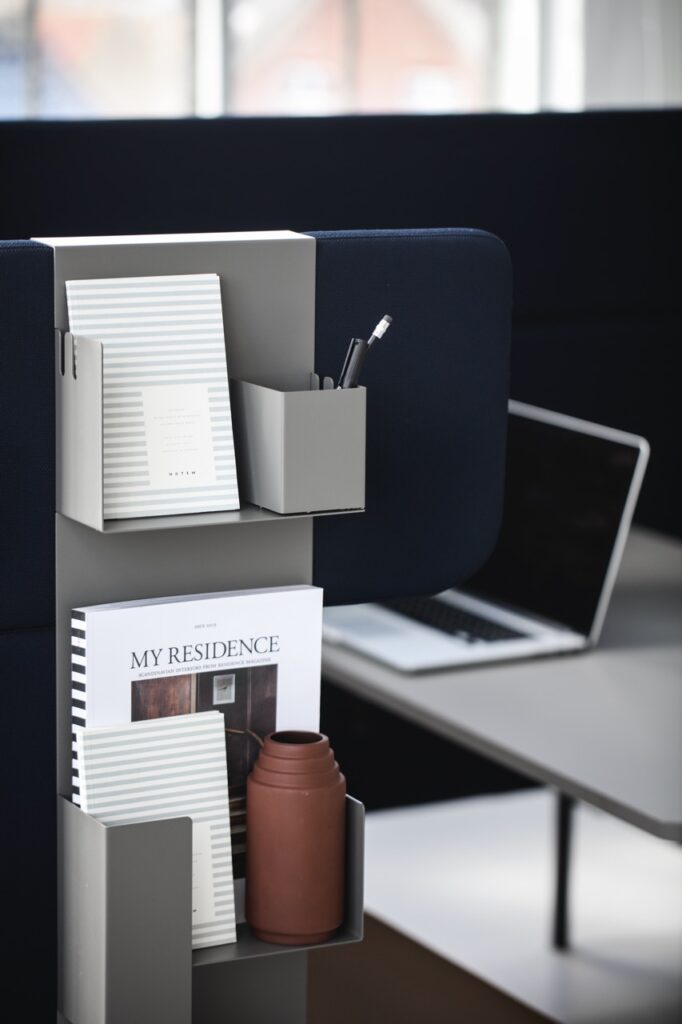The educational landscape is evolving rapidly, with hybrid learning emerging as a central pillar in modern education systems. Hybrid learning spaces – where digital and physical learning environments intersect – are reshaping how students engage with material, instructors, and each other. This shift requires a re-evaluation of traditional classroom furniture, pushing designers to craft pieces that seamlessly integrate both in-person and online educational experiences.
To support this, furniture needs to be adaptable, tech-friendly, and suited for flexible layouts. Below, we explore how modular designs, technology integration, and versatile setups are revolutionising hybrid learning spaces.
The Rise of Hybrid Education: A New Challenge for Learning Spaces
Hybrid education, where students may attend classes in-person or remotely, calls for flexible, multi-functional learning spaces that cater to various modes of engagement. It’s no longer just about creating classrooms where students sit in rows facing an instructor. Now, we must consider learning environments that accommodate face-to-face interactions, live-streamed lessons, and even collaborative work between online and on-campus students.
As universities and schools adopt hybrid learning, they face a design challenge: creating physical spaces that harmonise with digital tools and virtual learning platforms. Furniture design plays a pivotal role in making these environments successful, bridging the gap between in-person and remote experiences to ensure all students stay connected, engaged, and comfortable.
Modular Designs: Flexibility for Ever-Changing Needs
One of the key attributes of furniture for hybrid learning spaces is modularity. As classes shift between online and offline, and from lectures to group work, the need for furniture that adapts on the fly becomes essential. Modular furniture is a natural fit, providing flexibility in room configurations that can be re-arranged quickly and effortlessly.
For instance, modular desks that can be reconfigured into individual workstations or grouped together for collaboration allow for seamless transitions between different teaching styles and activities. Stackable chairs or desks on wheels enhance mobility and adaptability, letting educators adjust the space to meet the specific needs of a given lesson – whether it involves small group discussions, remote learners joining through video, or large-scale presentations.
Modular storage solutions are also crucial. They can house tools for both physical and virtual learning, such as books, tablets, and chargers, ensuring that students have everything they need within easy reach.
Tech Integration: Embedding Technology into Furniture
In hybrid learning spaces, technology integration is critical. Educational furniture must now accommodate a variety of tech needs, from power outlets for charging devices to mounts for cameras, monitors, and microphones for live-streaming classes. Desks designed with built-in charging stations, for example, eliminate the clutter of wires and help students focus on learning without worrying about battery life.
Interactive smartboards and displays also play a significant role in hybrid education, and furniture needs to facilitate their use. Adjustable mounts for screens and projectors ensure visibility for all students, whether they’re in the room or attending via video. Even basic furniture, like chairs and tables, can be enhanced with features that support technology, such as built-in docks or stands for laptops and tablets.
The FourReal® AV
One standout example of tech-integrated furniture is the FourReal® AV. This versatile mobile table is designed to adapt to modern educational and office environments. What truly sets the FourReal® AV apart is its multi-functional nature – it can mount a TV, turning it into a mobile AV hub perfect for online lectures, video calls, or streaming educational content. This is particularly valuable in hybrid learning spaces where both in-person and remote students need to stay connected.
Beyond its function as a table, the FourReal® AV transforms into a room divider, noticeboard, and even a storage solution. Its mobility is a key feature, with castors that allow it to be easily moved around the space as needed. Whether shifting from a collaborative group setting to an individual lecture or setting up for a remote learning session, the FourReal® AV offers the flexibility and tech integration that hybrid learning spaces require.

Another innovative aspect is soundproofing furniture or seating booths. In hybrid learning, some students may need to engage with remote peers via video call while others are working quietly in the same space. Sound-dampening materials and partitions can help create zones within a classroom for different activities, making sure all students can focus without distraction.
The FourUs® Booth
The FourUs® Booth is a modern and visionary booth designed for comfort, privacy, and versatility. This booth transforms any open-plan space into a multipurpose area perfect for meetings, relaxation, or focused work. Its design offers both visual and acoustic privacy, creating a private sanctuary within crowded or noisy settings, making it ideal for hybrid learning environments.
The booth seamlessly integrates into various environments, from open-plan classrooms to collaborative workspaces and even common areas. It provides a quiet area for students to focus on their studies or participate in remote learning sessions without distractions. A TV can be mounted in the booth, making it easier for students to engage with remote peers or instructors via online video calls. Additionally, the FourUs® Booth can be equipped with optional charging ports and adjustable lighting options, further enhancing its functionality and making it a comprehensive solution for hybrid learning spaces.
The booth’s acoustic properties are particularly beneficial in classroom settings, where background noise can disrupt learning. By offering reduced noise, students and instructors can engage in online discussions or focused work with minimal distraction. This combination of privacy, comfort, and tech integration ensures the FourUs® Booth plays a vital role in modern hybrid learning environments, supporting both digital and physical learning needs.
By incorporating multifunctional and tech-integrated pieces like the FourReal® AV and the FourUs® Booth, educational institutions can create flexible, dynamic spaces that support seamless transitions between physical and digital learning, fostering a productive and connected hybrid learning experience.
Flexible Layouts for Dynamic, Multi-Purpose Spaces
In a hybrid learning space, flexibility in layout is essential. Gone are the days when classrooms were static, with rows of immovable desks facing a single chalkboard. Today’s hybrid universities need spaces that can morph to fit a wide range of learning styles and needs.
For example, classrooms may need to transition from traditional lecture setups to collaborative workspaces or break-out groups. In some cases, spaces may even double as video production studios for educators creating digital lessons. The design of flexible layouts with easily movable furniture allows educators to experiment with different formats, from U-shaped seating arrangements for discussions to open spaces that support interactive, tech-driven projects.
The Y-Table
A key piece of furniture that enhances this adaptability is the Y-table, which fosters curiosity and creativity in its users. Its design encourages exploration of space and allows for diverse setups that support personalised workspaces. Whether students are engaging in individual study, group collaboration, or hybrid learning with remote participants, the Y-table’s lightweight and height-adjustable nature makes it easy to reconfigure the space based on the task at hand.
Additionally, the Y-table is highly manoeuvrable, allowing for flexible working styles and spontaneous productivity. Its ability to shift between different heights and layouts gives students and educators the freedom to customise the learning environment in real time, making it an ideal solution for dynamic hybrid learning spaces. By incorporating agile furniture like the Y-table, classrooms can easily accommodate the fluid nature of hybrid education, where the needs of both in-person and online students can change from moment to moment.


Fostering Collaboration and Inclusion
Hybrid learning thrives on the collaborative potential of combining physical and digital tools. Furniture that promotes interaction between in-person and remote learners is essential. For instance, seating arrangements that enable students to easily turn to face a screen or a remote classmate encourage inclusion and engagement across both groups.
Hybrid learning spaces also benefit from communal worktables equipped with tech tools like microphones and cameras, allowing remote students to participate in group projects or discussions without feeling left out. By designing furniture that supports such inclusivity, educational institutions can ensure that the hybrid model is not just functional, but also fosters a strong sense of community among students, regardless of their physical location.
Designing for the Future of Hybrid Learning
As hybrid education continues to grow, the design of learning spaces must evolve alongside it. The right furniture is key to creating environments that support both physical and digital learning, ensuring that all students – whether on site or online – can engage fully with their education. Modular designs offer the flexibility needed for changing learning formats, technology integration ensures seamless connectivity, and flexible layouts provide the adaptability to support various teaching methods.
Ultimately, the future of hybrid learning spaces will depend on how well we can merge traditional educational environments with new, tech-driven approaches to learning. Thoughtful, adaptable furniture design will be at the heart of making hybrid universities work for educators and students alike.




